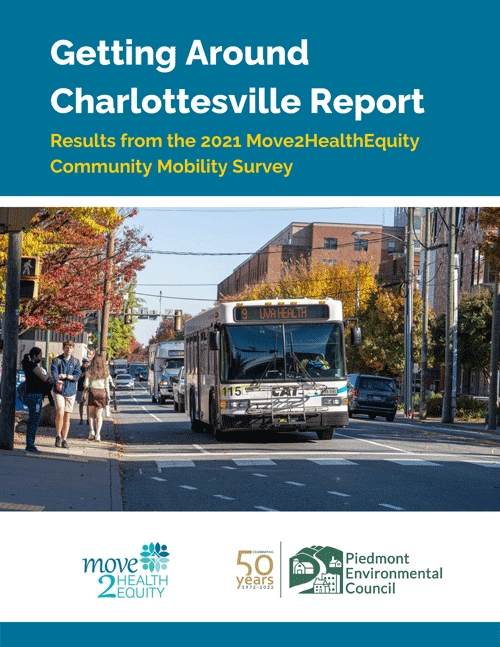A new report from The Piedmont Environmental Council and the Move2Health Equity Coalition sheds light on how people get around Charlottesville and recommendations from residents about how to make it safer and more practical to walk, bike and ride transit.
The report is based on the results of an electronic survey, conducted in the Spring and Summer of 2021 that was advertised widely and distributed through neighborhood and community groups. 15 questions focused on residents’ existing and preferred transportation modes, what barriers prevent them from traveling the way they would like to, and how they would suggest making it better.
There were 428 responses. The full report, titled Getting Around Charlottesville Results from the 2021 Move2HealthEquity Community Mobility Survey, is available online. We have also outlined some top-level findings below:
How people travel
Most respondents drive but would prefer to bike, walk, or ride the bus if their concerns could be addressed.
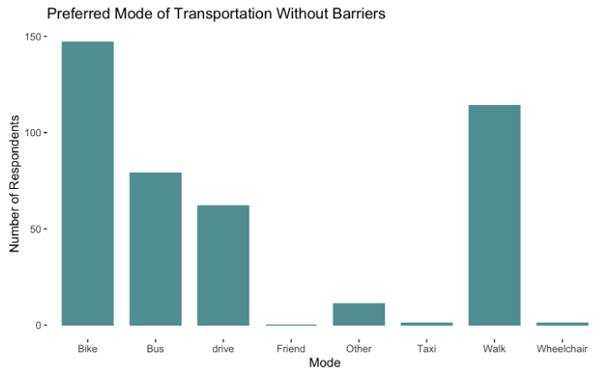
Respondents consistently said that the lack of sidewalks and crosswalks, insufficient or inconsistent bicycle infrastructure make them feel unsafe.
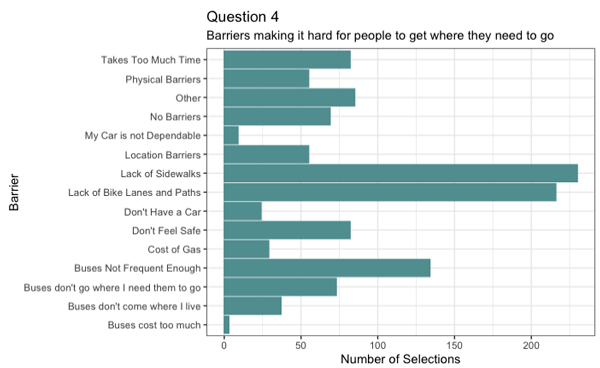
Respondents find transit impractical because it takes too long and is very indirect.
Where Charlottesville residents would like to go
They reported great desire for easier access to shopping, recreation and other services–especially by walking and bicycle.
Grocery stores, healthcare, schools and parks are repeatedly mentioned as destinations that ought to be more accessible. Work was consistently the easiest destination to reach–which would suggest modifying the current approach to transportation planning that focuses on a daily in-out commute.
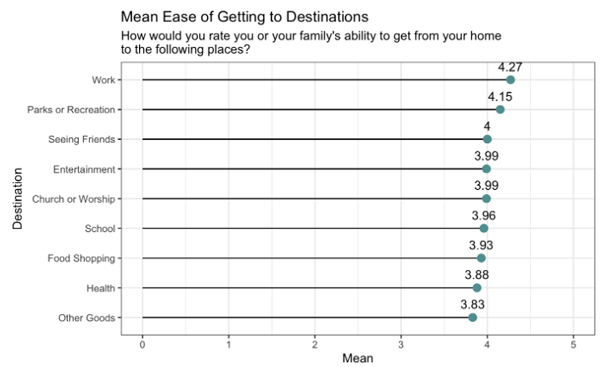
Which type of trip is most difficult depends on where one lives. Residents of suburban areas have greater difficulty getting to work, but residents of the core, historically Black neighborhoods (10th and Page, Venable, Fifeville and Ridge Street) have more trouble reaching services like food and healthcare.
The Impact of COVID-19
COVID-19 restrictions made it more difficult to administer the survey and is one of its limitations. But the pandemic did not seem to impact respondents’ travel mode choices, except for those who use (and depend on) transit. Their lives were dramatically affected.
Voluminous specific concerns and ideas
There were numerous suggestions for system-wide and place-specific improvements. The report aggregates ideas by neighborhood and planning theme (such as better biking or parking). The report also includes respondents’ actual responses both in summary and in respondents’ own words. There are about 30 pages of them but they are worth reading.
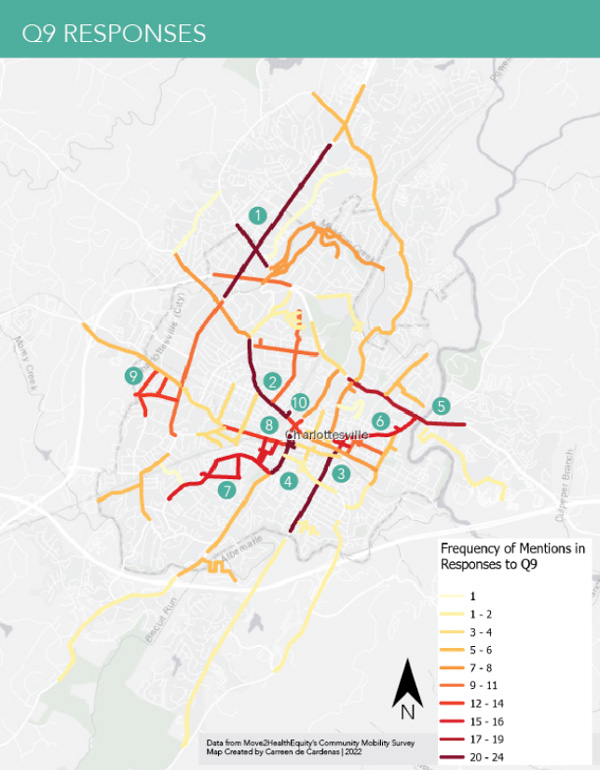
Recommendations
This report was intentionally timed to provide guidance just as the City of Charlottesville is figuring out how to implement its city-wide Comprehensive and Climate Action Plans–both of which focus intensely on walking and biking but provide few specifics.
Broadly the project team recommends the following:
- Prioritize safe routes to school, food, shopping, parks and healthcare.
- Connect people within and between neighborhoods and make it safer to cross commuter routes.
- Find creative ways to close the many gaps in sidewalks and bikeways; create low-stress alternative routes.
- Get the basics right, like crosswalks and removal of obstructions.
- Implement the proposed transit vision plan that increases overall frequency with specific focus on improving access to food, retail and healthcare.
Next Steps
Move2Health Equity’s Active Communities team will present these findings to decision-makers including City Council, staff and the Planning Commission, which oversees development in the city. This report and others will be the basis of a campaign for better mobility in Charlottesville.
The team is also committed to reporting back to the community groups who participated in the study, with custom presentations focused on their neighborhoods. Community leaders and concerned residents are always the strongest advocates for change.
Most importantly, the team will return to the field with person-to-person follow-up conversations with residents–particularly in priority communities (lower-income households and people of color). The survey did not do a sufficient job of gathering their perspectives but it is also clear that there needs to be better infrastructure in these locations.
The Move2Health Equity Coalition promotes healthy eating and active lifestyles for all community members. The coalition works through a Collective Impact Model in which independent member organizations combine resources to make a difference in areas where their missions overlap. Move2Health has four workgroups that address core priorities: Access to Healthcare, Healthy Spaces, Active Communities and Healthy Food Systems.
For 50 years, The Piedmont Environmental Council has worked to promote compact, livable cities, surrounded by distinctly rural lands where farms, forests, and natural systems predominate. In 2021, PEC brought together the Piedmont Mobility Alliance: a coalition of organizations that share a vision of a better-connected community for walking, biking and other forms of active transportation in Charlottesville and Albemarle County.
Questions? Contact Peter Krebs at pkrebs@pecva.org.

